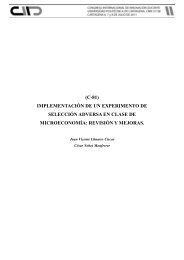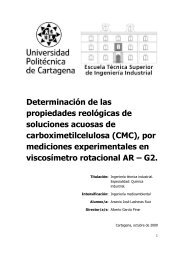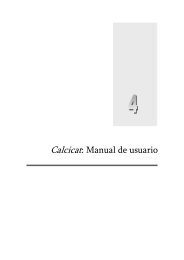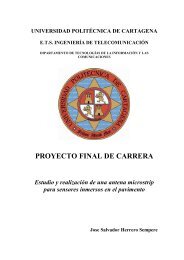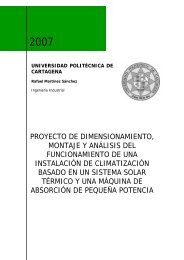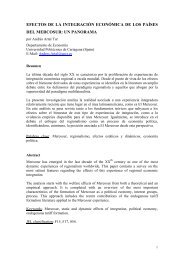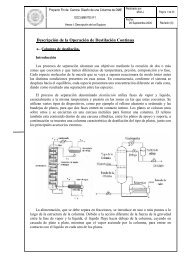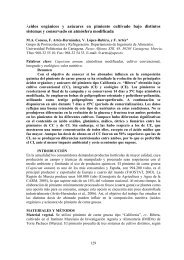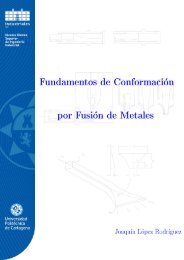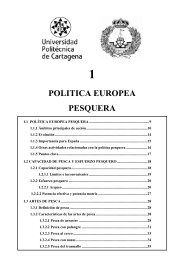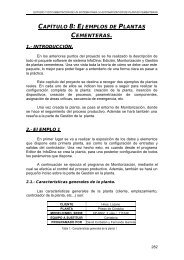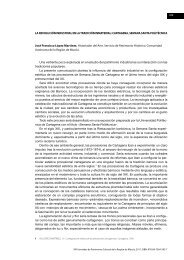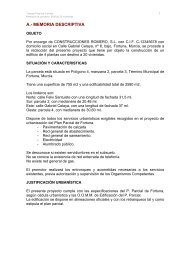Predistorted Ku-band rectangular waveguide input filter
Predistorted Ku-band rectangular waveguide input filter
Predistorted Ku-band rectangular waveguide input filter
You also want an ePaper? Increase the reach of your titles
YUMPU automatically turns print PDFs into web optimized ePapers that Google loves.
Fig. 4. Theoretical predistorted response without considering parasitic<br />
couplings (theo) and considering them (real).<br />
Fig. 2. Full-wave EM models a) external coupling, b) in-line inductive<br />
coupling, c) folded inductive coupling, d) capacitive cross-coupling, and e)<br />
overall structure.<br />
Fig. 5. Comparison between non-predistorted and predistorted responses S 11<br />
(top) and S 21 (bottom).<br />
Fig. 3. Theoretical non-predistorted response without considering parasitic<br />
couplings (theo) and considering them (real).<br />
IV. CONCLUSION<br />
In this work an adaptive predistortion synthesis has been<br />
applied to the design of a six-pole predistorted <strong>rectangular</strong><br />
cavities <strong>filter</strong> with two transmission zeros and folded topology.<br />
Responses obtained from full-wave EM simulations of the<br />
complete structure show very good agreement with expected<br />
theoretical responses. It seems feasible to use this method in<br />
order to design high performance (Q > 10000) <strong>input</strong> <strong>filter</strong>s<br />
with transmission zeros in standard <strong>rectangular</strong> <strong>waveguide</strong><br />
technology.<br />
REFERENCES<br />
[1] G. Maral, M. Bousquet, and Z. Sun, Satellite communications systems:<br />
systems, techniques and technology. Wiley, 2009.<br />
[2] G. Matthaei, L. Young, and E. Jones, Microwave <strong>filter</strong>s, impedancematching<br />
networks, and coupling structures. Artech House Dedham,<br />
MA, 1980, vol. 1964.<br />
[3] R. Cameron, “General coupling matrix synthesis methods for chebyshev<br />
<strong>filter</strong>ing functions,” IEEE Trans. Microwave Theory Tech., vol. 47, no. 4,<br />
p. 433–442, 1999.<br />
[4] A. Atia and A. Williams, “Narrow-<strong>band</strong>pass <strong>waveguide</strong> <strong>filter</strong>s,” IEEE<br />
Trans. Microwave Theory Tech., vol. 20, no. 4, p. 258–265, 1972.<br />
[5] L. Accatino, G. Bertin, and M. Mongiardo, “A four-pole dual mode<br />
elliptic <strong>filter</strong> realized in circular cavity without screws,” IEEE Trans.<br />
Microwave Theory Tech., vol. 44, no. 12, p. 2680–2687, 1996.<br />
[6] A. Williams, W. Bush, and R. Bonetti, “Predistortion techniques for<br />
multicoupled resonator <strong>filter</strong>s,” IEEE Trans. Microwave Theory Tech.,<br />
vol. 33, no. 5, p. 402–407, 1985.<br />
[7] M. Yu, W. Tang, A. Malarky, V. Dokas, R. Cameron, and Y. Wang,<br />
“Predistortion technique for cross-coupled <strong>filter</strong>s and its application to<br />
satellite communication systems,” IEEE Trans. Microwave Theory Tech.,<br />
vol. 51, no. 12, p. 2505–2515, 2003.<br />
[8] M. Yu and V. Miraftab, “Shrinking microwave <strong>filter</strong>s,” Microwave Magazine,<br />
IEEE, vol. 9, no. 5, p. 40–54, 2008.



